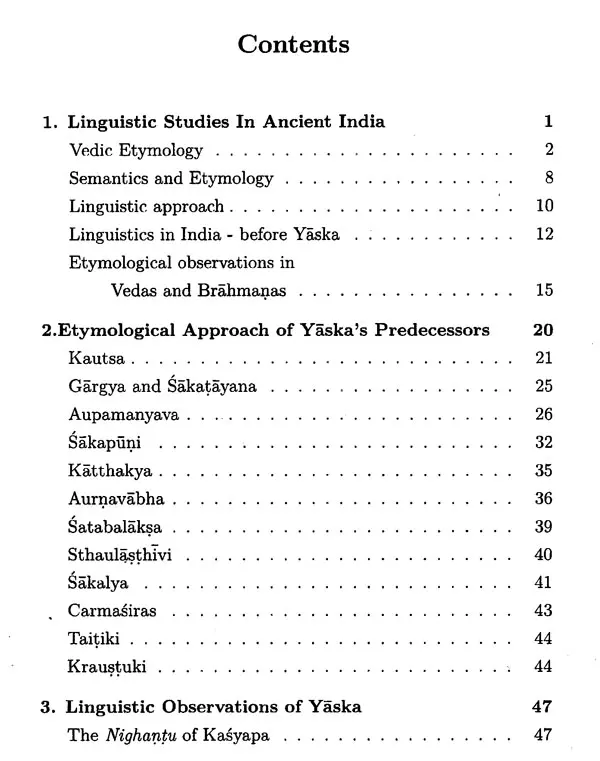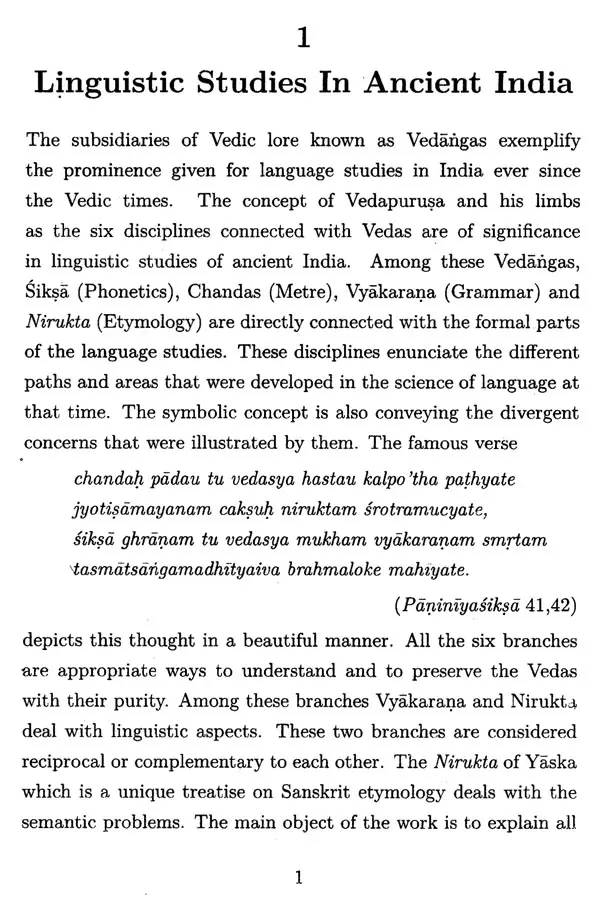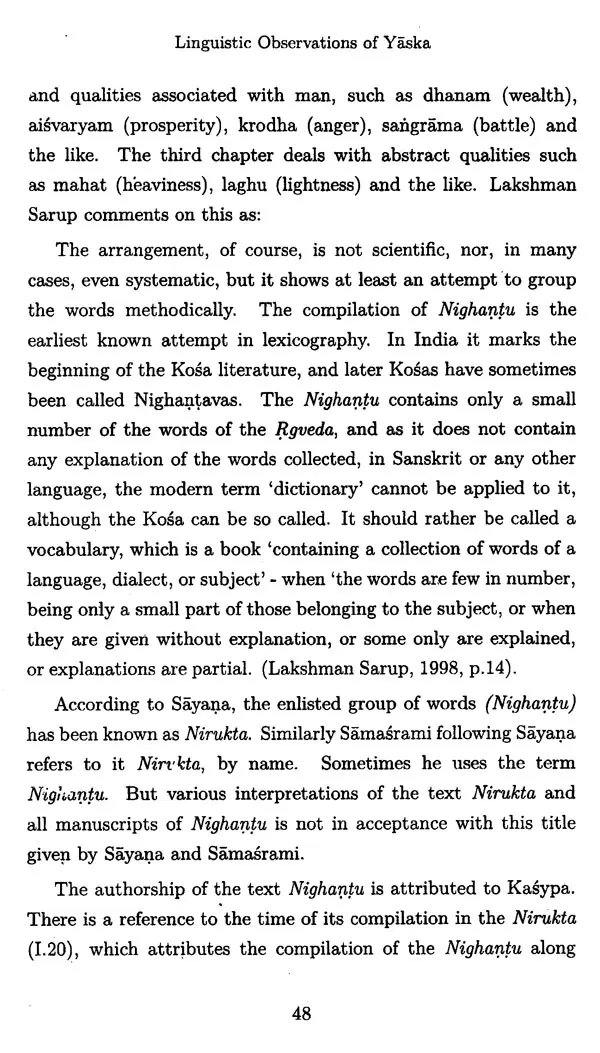
Vedic Etymology and Semantics A Linguistic Approach (Chinmaya Research Series 4)
Book Specification
| Item Code: | UAK282 |
| Author: | Parvathy K. P. |
| Publisher: | old CHINMAYA INTERNATIONAL FOUNDATION |
| Language: | English |
| Edition: | 2012 |
| ISBN: | 9789380864105 |
| Pages: | 142 |
| Cover: | HARDCOVER |
| Other Details | 9.00 X 6.00 inch |
| Weight | 340 gm |
Book Description
Vyakarana (Grammar) and Nirukta (Etymology) deal with linguistic aspects and are auxiliaries to Vedas. These two branches are considered reciprocal or complementary to each other. The Nirukta of Yaska is a unique treatise on Sanskrit etymology and it deals with the semantic problems. The main object of the work is to explain all the possible meanings of Vedic words for posterity who are generally unaware of the meaning of the Vedic passages. Yaska's Nirukta etymologically derives the words of the Nighantu of Kasyapa which perhaps is the only one of the six limbs of the Vedic body that is traced out barely to one author where as all other constituents such as Siksa (Phonetics) and Vyakarana (Grammar) have several celebrated schools.
Yaska elucidates the fourfold purposes of Nirukta thus a. understanding the precise meaning of Vedic stanzas, b. knowledge of word-division, c. arriving at a conclusion on the injunctions with regard to the characteristics of deities in the sacrificial act, and d. ignorance. to be able to eulogize knowledge and denounce Ignorance.
Among the four goals, adulation of knowledge is of paramount importance. The study of Niruktassstra is important to gain actual knowledge of Vedic texts. The other three objects of Niruktasastra, stated by Yaska are but only complimentary to the fourth one.
The Nirvacanavyavastha or the mode of etymological analysis illustrates two categories of words. Words that are regular in their grammatical form and accent system and that accompanied by an explanatory radical modification come under the first category the other being irregular in grammatical forms, irrelevant in meaning and the explanatory radical modification being non existent. Thus etymologists do not stress on grammatical explanations. They are rather concerned with establishing the root origin of words.
The studies on Vedic etymology and semantics are closely related to the Nirukta of Yaska and this book concentrates on the linguistic aspects of Vedic etymology. The term Vedic is used in this book entitled, Vedic Etymology and Semantics. A Linguistic Approach, to denote the earliest treatises on Vedic literature from the period of Samhita texts to Brahmanas, Aranyakas and Upanisads which are considered supplementary developments of the Samhita. The upavedas are not treated here. Yaska makes contextual analysis of the words and passages of the Vedic literature.
Although one of the six Vedangas, due to the exegetical nature of the work itself, the Nirukta was left without sufficient commentaries. Further, the tradition of Yaska which stresses on etymology was accepted by various Sanskrit scientific disciplines and even by literary works in their expositions of hermeneutical and structural analysis. Three commentators Ugra, Skandasvami and Durga are known to have elucidated Yaska's work. The most important of these commentators is that of Durga. He is the only available commentator who approached the Nirukta in the traditional way of Sanskrit. The present work would throw much light on this aspect.
**Contents and Sample Pages**















